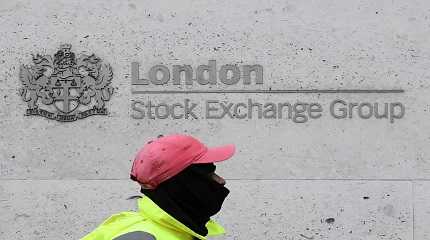
LONDON, March 7 (Reuters) - Global shares were broadly steady and the dollar nudged higher on Tuesday, ahead of Federal Reserve Chair Jerome Powell's testimony that could offer a steer on the outlook for U.S. rates, while soft Chinese trade data dented oil.
Data showed China's exports and imports both fell sharply in January-February, reflecting a slowdown in the global economy and weak domestic demand, knocking Chinese blue chips <.CSI300>, while the offshore yuan edged up against the dollar.
Crude shipments into China fell in January and February, stirring concern about demand in the world's largest importer, which weighed on the oil price.
Beyond China, investor focus remains on the U.S. interest rate outlook and what Powell may say.
"Over the last few weeks, data out of the US has been far more resilient than expected, fuelling bets that the Fed will have to raise rates beyond what was communicated earlier and rates will stay elevated for longer as well," strategists at Saxo Bank said.
"Most Fed members have also sounded hawkish, raising the prospect of a shift higher in March dot plot. If a similar message is conveyed by Chair Powell, we could see U.S. Treasury yields rising again and the dollar reversing back to an uptrend," they said.
The MSCI All-World index of global shares (.MIWD00000PUS) was marginally in positive territory at 641.60 points, close to Monday's two-week highs.
Yields on benchmark 10-year Treasury notes , which have more than doubled in the last 12 months, were last down 5 basis points on the day at 3.93%.
Yields on the two-year note , which are more sensitive to changes in interest rate expectations, were down 4 bps at 4.857%. Two-year yields have more than trebled in the last year to almost 5%, their highest since 2007.
Money markets show traders believe U.S. rates will peak just shy of 5.5% by September, from a range of 4.50-4.75% right now.
The expected peak was closer to 4.7% just a month ago.
POWELL POINTERS
Powell starts his semi-annual two-day testimony before Congress on Tuesday. Investors will monitor his remarks for any insight into his thinking on where U.S. rates will likely head.
Futures traders are pricing in a 76% probability the Fed will raise rates by 25 basis points at its March 21 to 22 meeting and a 24% likelihood of a 50 bp increase.
The U.S. February employment report is expected on Friday and any softening in the robust jobs market will be seen as a sign that the Fed's rate hikes are having their desired effect.
Bank of America (BAC.N) chief executive Brian Moynihan on Tuesday told a Sydney business summit that the bank predicted the U.S economy would reach a technical recession later this year before the central bank begins cutting rates in 2024.
"It's a very slight recession in the scheme of things. I don't think you'll see a deep recession," he said.
"In our view that is based on a corporate side or a commercial side slowdown, not a consumer side slowdown."
In Europe, a slew of earnings updates helped push the STOXX 600 (.STOXX) into positive territory, up 0.3% thanks to gains in healthcare and industrial stocks.
U.S. stock futures rose, with S&P 500 e-minis up 0.2% and Nasdaq 100 futures up 0.3%.
A number of major central banks deliver policy decisions this week. The Reserve Bank of Australia on Tuesday raised interest rates, as expected, but tempered its hawkish outlook, which investors took as a sign the end to the policy tightening cycle make be near. That pushed the Australian dollar to a more than two-month low of $0.6690, marking a loss of 0.6% on the day.
The dollar edged up against a basket of major currencies, thanks to gains against the Aussie dollar and the euro, which fell 0.2% to $1.0661.
The dollar lost 0.2% against the yen to trade at 135.69, below last week's 2023 high at 137.10.
Chinese trade data on Tuesday showed a pickup in crude oil imports - a sign of a likely improvement in energy demand.
Brent crude futures , which are roughly flat this year, were down 0.2% at $86 a barrel, as was U.S. crude at $80.30.




